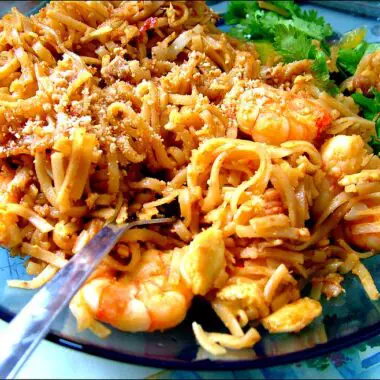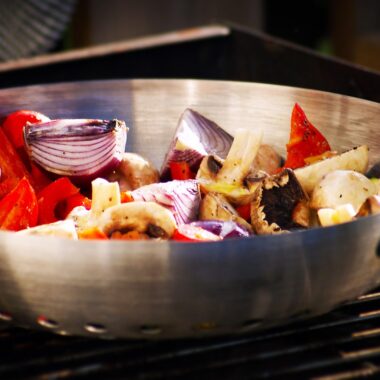Bannock is a beloved and historical bread that holds a special place in Canadian cuisine. With its simple ingredients and versatility, this bread has been a staple food among Indigenous communities and settlers for centuries. Whether cooked over an open flame, in an oven, or fried in a pan, bannock offers a delicious, comforting, and easy-to-make experience.
In this article, we will explore the origins of bannock, its cultural significance, different variations, and a step-by-step guide on how to make traditional and modern versions of this hearty bread.
The History and Cultural Significance of Bannock
Bannock’s origins trace back to Scottish settlers, but its deep roots in Indigenous Canadian culture make it an integral part of the country’s food history.
Scottish Influence and Indigenous Adoption
The word bannock is derived from the Gaelic word bannach, which refers to a round, flat loaf or oatcake that was traditionally cooked on a griddle. Scottish settlers brought bannock to North America, where Indigenous peoples quickly adopted and modified the recipe using locally available ingredients.
For many Indigenous communities, bannock became an essential survival food due to its simplicity, affordability, and long shelf life. Over time, it evolved into a fundamental part of Indigenous cuisine, particularly among First Nations, Métis, and Inuit peoples. It was commonly cooked over an open fire, baked in the ground, or fried, allowing it to be easily transported during hunting and traveling.
Symbolism and Community Significance
Bannock is more than just bread—it carries deep cultural significance. It represents resilience, adaptability, and survival, as Indigenous communities embraced and transformed it into a staple food. Today, bannock is commonly found at Indigenous gatherings, powwows, and feasts, serving as a symbol of tradition and community.
Traditional vs. Modern Bannock
There are multiple variations of bannock, ranging from traditional Indigenous styles to contemporary adaptations.
Traditional Indigenous Bannock
Historically, Indigenous bannock was made using natural ingredients such as:
- Ground corn
- Roots and berries
- Wild grains
- Animal fats (instead of butter or oil)
Traditional bannock was often cooked over an open fire on hot stones, buried in sand, or fried in a pan. Some Indigenous groups used a wooden stick to wrap dough around and cook it over flames, a technique that is still used today in outdoor and camping settings.
Modern Bannock
Today, modern bannock recipes often include:
- White or whole wheat flour
- Baking powder (as a leavening agent)
- Salt and sugar
- Butter or vegetable oil
- Water or milk
This version of bannock can be baked in an oven, fried in a pan, or deep-fried to create a crispy and fluffy texture. Many people also add contemporary ingredients such as cheese, herbs, or dried fruit to customize the flavor.
How to Make Bannock: Traditional and Modern Recipes
Now, let’s explore how to make bannock using both traditional and modern methods.
Traditional Campfire Bannock Recipe
This version is great for camping or outdoor cooking over an open fire.
Ingredients:
- 3 cups of flour (white or whole wheat)
- 1 tablespoon baking powder
- 1 teaspoon salt
- ¼ cup lard or animal fat
- 1 cup water (adjust as needed)
Instructions:
- Prepare the Dough: In a mixing bowl, combine flour, baking powder, and salt. Add the lard or animal fat and mix until crumbly.
- Add Water Gradually: Slowly pour in water and mix until a dough forms. The dough should be soft but not sticky.
- Shape the Dough: Flatten the dough into a round disc, about 1 inch thick.
- Cooking Over a Fire:
- On a Stick: Take a portion of the dough, wrap it around a clean stick, and hold it over an open flame, rotating frequently until golden brown.
- On Hot Stones: Place the dough on hot stones near the fire, turning occasionally.
- Pan-Fried: Heat a cast-iron pan over the fire, lightly grease it, and cook the dough on each side until golden brown (about 5-7 minutes per side).
This rustic version of bannock is dense, hearty, and perfect for eating with butter, honey, or jam.
Modern Baked Bannock Recipe
This version is ideal for making bannock at home using an oven.
Ingredients:
- 3 cups all-purpose flour
- 1 tablespoon baking powder
- 1 teaspoon salt
- 2 tablespoons sugar (optional)
- ¼ cup melted butter or vegetable oil
- 1 ¼ cups water or milk
Instructions:
- Preheat the Oven: Set the oven to 375°F (190°C). Lightly grease a baking sheet or cast-iron skillet.
- Mix Dry Ingredients: In a large bowl, combine flour, baking powder, salt, and sugar.
- Add Butter and Liquid: Pour in the melted butter and gradually add water or milk while mixing. Stir until a soft dough forms.
- Shape and Bake: Transfer the dough to a floured surface and gently knead it for a minute. Flatten it into a round or rectangular shape (about 1 inch thick) and place it on the prepared baking sheet.
- Bake: Bake for 25-30 minutes, or until golden brown and firm to the touch. Let cool slightly before slicing.
This oven-baked bannock has a soft, fluffy texture and is delicious when served warm with butter, jam, or savory toppings.
Pan-Fried Bannock (Quick & Crispy)
For a crispy, quick-cooking version, this pan-fried bannock is perfect.
Ingredients:
- 2 cups flour
- 1 tablespoon baking powder
- ½ teaspoon salt
- ¼ cup butter or oil
- ¾ cup water
Instructions:
- Mix Dry Ingredients: Combine flour, baking powder, and salt in a bowl.
- Add Butter and Water: Mix in the butter and slowly add water until a soft dough forms.
- Shape into Discs: Divide the dough into smaller portions and flatten them into discs (about ½ inch thick).
- Heat Oil in a Pan: In a skillet over medium heat, add a bit of oil and fry each bannock piece for 3-5 minutes per side, until golden brown.
- Drain & Serve: Remove from the pan and let drain on paper towels. Serve warm.
This version is slightly crispy on the outside with a fluffy interior, making it a great base for both sweet and savory toppings.
Delicious Bannock Variations
Bannock can be customized in many ways! Here are some popular variations:
Sweet Bannock
- Add ½ cup of dried fruit (raisins, cranberries, or blueberries).
- Mix in 2 tablespoons of honey or maple syrup.
- Sprinkle with cinnamon sugar before serving.
Savory Bannock
- Add 1 cup of shredded cheese and 1 teaspoon of garlic powder.
- Incorporate fresh herbs such as rosemary or chives.
- Mix in crumbled cooked bacon for extra flavor.
Vegan Bannock
- Substitute butter with coconut oil or vegan margarine.
- Use plant-based milk instead of dairy milk.
Conclusion
Bannock is a timeless and adaptable bread that has been cherished across generations. Whether cooked over an open fire, baked, or fried, this simple yet hearty bread remains a staple in Canadian culture. Its history reflects a blend of traditions, resilience, and community, making it more than just a meal—it’s a symbol of survival and heritage.
By trying different variations and cooking methods, you can enjoy bannock in a way that suits your taste and lifestyle. So, whether you’re in the wilderness, at home, or celebrating a cultural event, bannock is a delicious way to connect with history and tradition.
Would you like to try making bannock at home? Let us know how your version turns out!


















